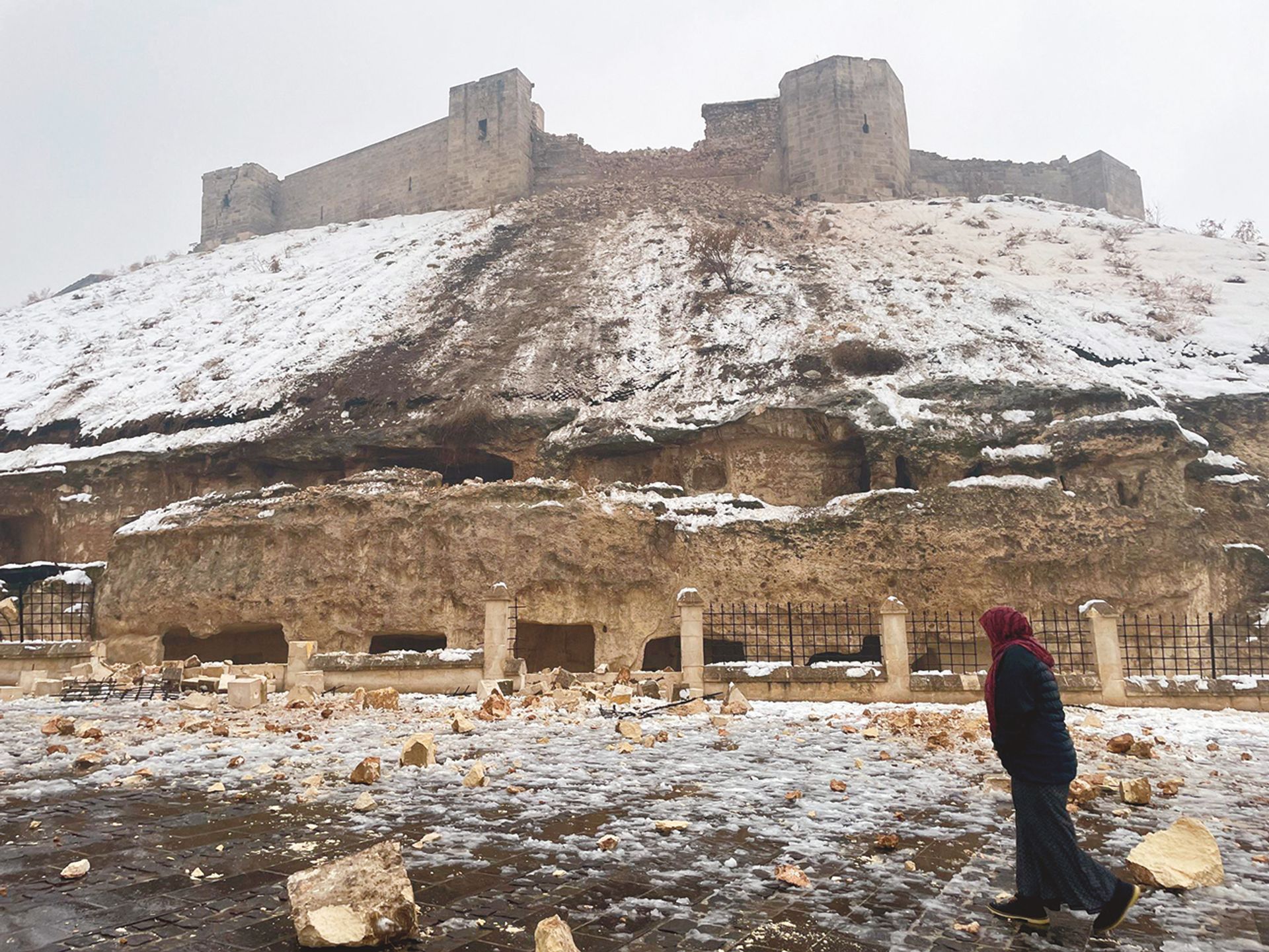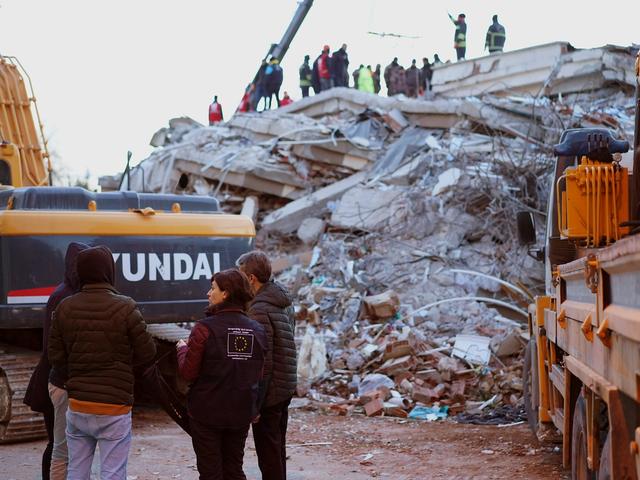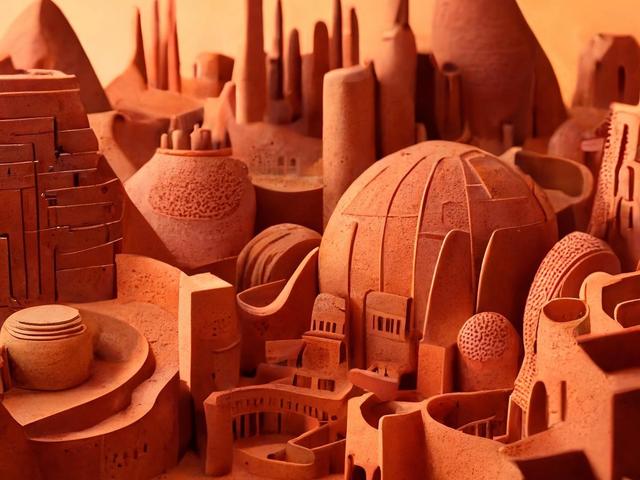Two of the largest earthquakes in the history of the Eastern Mediterranean shook southern Turkey and north-western Syria in the early hours of Monday 6 February. The quakes had a magnitude of 7.8 and 7.6 on the Richter scale. The current death toll stands at more than 46,000, and several thousand missing are now presumed dead. On 20 February, the same region of Turkey was hit by another 6.4-magnitude earthquake and a second measuring 5.8.
The catastrophic events have devastated countless heritage structures, archaeological areas and religious sites, many still active places of worship, across an area so vast that it encompasses ten Turkish provinces and impacts more than 13 million people.
Notable historical buildings that have sustained heavy damage include the bastions of the Gaziantep Castle, a Hittite Empire fortress built in the second millennium BC and developed into a Roman-Byzantine construction in the second century AD. It was further expanded by the Byzantine Emperor Justinian in the fifth century AD.
Łukas Sokołowski, a Polish archaeologist and expert on the Roman East, says the castle is “fundamental to understanding the region”. “While some photographs of the castle just show damage to parts of its walls and two of its bastions, in other images, it appears as if the earthquake has completely levelled the historical, 1,800-year-old landmark,” Sokołowski noted on Twitter.
Karakuș Tumulus, a funerary monument created by Mithridates II of Commagene and built in 30-20BC in the modern province of Adıyaman, is also reported to have collapsed.
The current condition of the Unesco-listed Mount Nemrut, also in Adıyaman and home to the mausoleum of Antiochus, remains unknown as the site is inaccessible due to weather conditions. Some ancient structures have survived—Turkey’s famous archaeological site Göbekli Tepe, in the province of Şanlıurfa, just a few miles from the epicentre of the quake, is undamaged.
Though less extensively reported, damage to heritage sites is most significant in the southernmost province of Hatay. The city centre of Antakya—the province’s capital and the site of the ancient Hellenistic city of Antioch, founded in 300BC—has been almost completely flattened. Places of worship for the three faiths of the city have been obliterated: the Antakya Synagogue, erected in 1890; the Habib-i Neccar Mosque, demolished during the 1853 earthquake and rebuilt by the Ottomans; and the Orthodox church of St Peter and Paul.

Gaziantep Castle, a Hittite Empire fortress developed into a Roman-Byzantine construction and expanded in the fifth century AD, sustained heavy damage Photo: Mehmet Akif Parlak/Anadolu Agency via Getty Images
Some famous landmarks of Antakya have somehow managed to survive the earthquake unscathed. The Hatay Archaeology Museum, known for its extensive collection of Roman mosaics, has survived while sustaining partial damage to one section of the building. A number of artefacts were shattered after falling on the floor. Staff from other museums have been drafted in and solar-powered camera systems installed to prevent lapses in security caused by power failures. The neighbouring Museum Hotel, controversially built above one of the region’s largest surviving Roman mosaics, has also avoided any damage. Both the museum and the hotel were built over the past decade, so may have benefited from stricter seismic standards than other constructions in Antakya.
The nearby church of St Pierre, also known as the Cave-Church of St Peter, is one of Christianity’s oldest churches, dating back to the fourth or fifth century. Close by is the Charonion monument, of unknown origin, built some time between the Neo-Hittite Empire and the Hellenistic period. Both have survived undamaged. But entire swathes of the city have been destroyed, and the rubble of flattened residential homes continues for kilometres. A number of arrest warrants have been issued for architects and developers responsible for newer buildings that did not withstand the force of the quake.
Active places of worship
South of Antakya, in the highlands between the city and the coastline, religious heritage sites that remain active places of worship by Christian communities have been levelled. The Orthodox churches of Mar Yuhanna in Arsuz, Meryem Ana in Altınözü, Meryem Ana in Samandağ and Aziz Nikola in Iskenderun have been severely damaged or destroyed, as well as the Latin Catholic church in Iskenderun. Relief services for the community, relying solely on donations and activists’ work, continue at St Ilyas church in Samandağ and Mar Circos church in Iskenderun, while a mass service was held at Mar Circos monastery in Altınözü.
Turkey-Syria earthquake: the race to save damaged heritage sites
Some of the more remote heritage sites in the mountainous region remain unaccounted for, such as the monastery of St Simeon Stylites the Younger, a sixth-century AD monastery in ruins on top of the Saman Dağı hill, as well as its predecessor, the basilica of St Simeon Stylites the Elder, on a hill close to Turkey’s border with Syria. Also unaccounted for is the Catholic Surp Asdvadzadzin church in the Armenian village of Vakıfli, the last rural Armenian community left in Turkey.
Initial news reports said that the Vespasianus Titus Tunnel, a second century AD water tunnel, as well as the Hellenistic city of Seleucia Pieria in Çevlik, a seaside resort village in Samandağ, were destroyed. But The Art Newspaper visited both sites on 12 February and at that point they were largely undamaged.
It is hard to accurately estimate at present the extent and scale of the damage caused by the earthquake to local communities and their heritage, but, even now, it is possible to say that some of the destruction is permanent.
Government response
So far, the government has been largely absent from Hatay, and there has been almost no emergency response regarding heritage sites, except for an update from the Ministry of Culture about the status of some landmarks and museums.
The local historian Emre Can Dağlıoğlu is a PhD candidate at Stanford University in the US and the editor of Nehna, an online publication focused on the histories of minorities in the Antakya region. “It’s difficult to say anything about the government response in Antakya because I’ve heard nothing about it,” he tells The Art Newspaper. “But I’m sure that they will use this as an opportunity to try and rebuild the destroyed churches in order to portray themselves as a government that embraces diversity.”
While it is traumatic to see structures that have stood for millennia crumble, the emergency response to the earthquake must necessarily prioritise the region’s people first, Dağlıoğlu says.
“I’m heartbroken that some people seem more interested in old buildings than in the intangible heritage of the many communities in this region,” he says. “A lot of people in Antakya have been displaced by the earthquake. We have to find a way to allow them to settle here again. These communities are irreplaceable. There’s no reason to restore a church without its people.”
• Listen to our The Week in Art podcast on the Turkey-Syria earthquakes here




